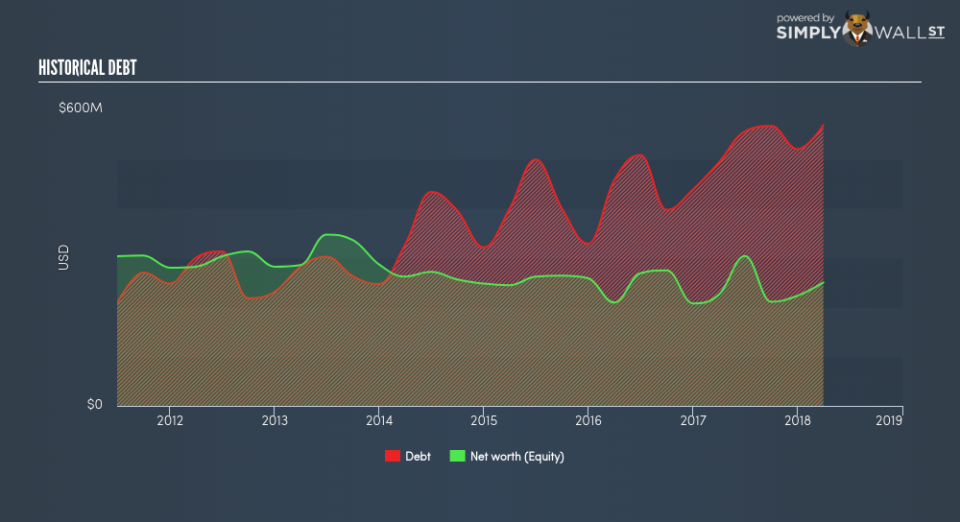Are Pool Corporation’s (NASDAQ:POOL) Interest Costs Too High?

Small-cap and large-cap companies receive a lot of attention from investors, but mid-cap stocks like Pool Corporation (NASDAQ:POOL), with a market cap of US$6.26b, are often out of the spotlight. Despite this, the two other categories have lagged behind the risk-adjusted returns of commonly ignored mid-cap stocks. Today we will look at POOL’s financial liquidity and debt levels, which are strong indicators for whether the company can weather economic downturns or fund strategic acquisitions for future growth. Note that this information is centred entirely on financial health and is a top-level understanding, so I encourage you to look further into POOL here. Check out our latest analysis for Pool
How much cash does POOL generate through its operations?
POOL’s debt levels surged from US$438.04m to US$519.65m over the last 12 months – this includes both the current and long-term debt. With this growth in debt, POOL’s cash and short-term investments stands at US$31.53m for investing into the business. On top of this, POOL has produced US$175.31m in operating cash flow in the last twelve months, leading to an operating cash to total debt ratio of 33.74%, meaning that POOL’s current level of operating cash is high enough to cover debt. This ratio can also be interpreted as a measure of efficiency as an alternative to return on assets. In POOL’s case, it is able to generate 0.34x cash from its debt capital.
Can POOL pay its short-term liabilities?
At the current liabilities level of US$321.57m liabilities, the company has maintained a safe level of current assets to meet its obligations, with the current ratio last standing at 2.43x. Usually, for Retail Distributors companies, this is a suitable ratio since there is a bit of a cash buffer without leaving too much capital in a low-return environment.
Is POOL’s debt level acceptable?
With total debt exceeding equities, POOL is considered a highly levered company. This is not unusual for mid-caps as debt tends to be a cheaper and faster source of funding for some businesses. We can check to see whether POOL is able to meet its debt obligations by looking at the net interest coverage ratio. A company generating earnings before interest and tax (EBIT) at least three times its net interest payments is considered financially sound. In POOL’s, case, the ratio of 18.79x suggests that interest is comfortably covered, which means that debtors may be willing to loan the company more money, giving POOL ample headroom to grow its debt facilities.
Next Steps:
POOL’s high cash coverage means that, although its debt levels are high, the company is able to utilise its borrowings efficiently in order to generate cash flow. This may mean this is an optimal capital structure for the business, given that it is also meeting its short-term commitment. This is only a rough assessment of financial health, and I’m sure POOL has company-specific issues impacting its capital structure decisions. I suggest you continue to research Pool to get a more holistic view of the mid-cap by looking at:
Future Outlook: What are well-informed industry analysts predicting for POOL’s future growth? Take a look at our free research report of analyst consensus for POOL’s outlook.
Valuation: What is POOL worth today? Is the stock undervalued, even when its growth outlook is factored into its intrinsic value? The intrinsic value infographic in our free research report helps visualize whether POOL is currently mispriced by the market.
Other High-Performing Stocks: Are there other stocks that provide better prospects with proven track records? Explore our free list of these great stocks here.
To help readers see pass the short term volatility of the financial market, we aim to bring you a long-term focused research analysis purely driven by fundamental data. Note that our analysis does not factor in the latest price sensitive company announcements.
The author is an independent contributor and at the time of publication had no position in the stocks mentioned.

